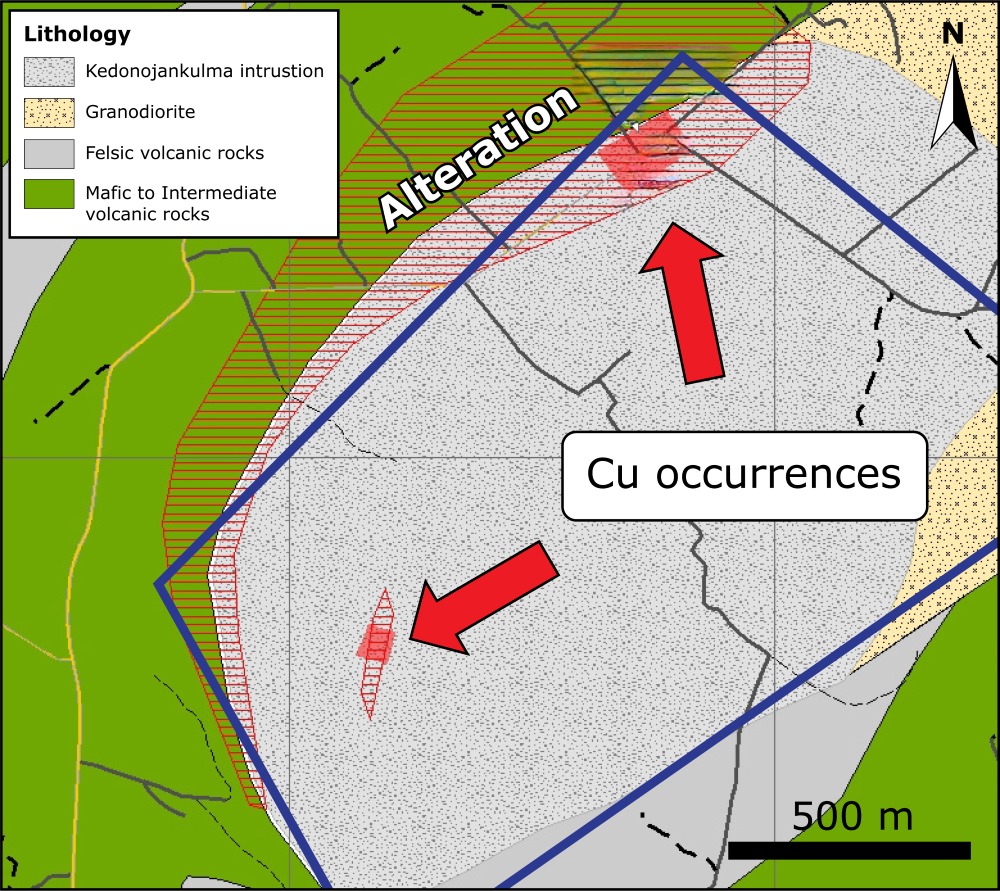Kedono
The Kedono project is located ~100 km NW of Helsinki and 12 km NW of Forssa in southern Finland. The project occurs in the Paleo-Proterozoic Häme volcanic-intrusive complex, which includes lithologies from quartz-feldspar porphyry to granodiorite and tonalite. Local intense sulfide alteration can be found within the license.
Kedono was discovered by GTK in 2005. GTK collected abundant data on the license area through various studies and exploration work until 2024, when EMX acquired the property. Till sampling yielded results up to 4.3% Cu and 588 ppb Au.1 Mapping and follow up drilling were later completed based on anomalous till geochemistry (example intersection: 63m from 37-100m at 0.6% Cu, 0.07 ppm Au, and 17.6 ppm Ag).2 Detailed ESG studies were completed by GTK on the license area.3 A groundwater study revealed non potable water due to elevated As and Cu, as well as no aquifer connection to important surface waters. No other encumbrances were identified in these studies, such as endangered animals, protected plants, protected tills, and protected historical monuments. Other work includes soil geochemistry and several ground geophysical surveys (resistivity, IP, EM, and mag).
Initial work by EMX suggests potential for multiple overlapping hydrothermal systems, including porphyry, IOCG, and orogenic mineralization. Remobilization of sulfides resulting from structural deformation may further enrich grades locally.
1 Detailed till geochemistry, modified data, Geological Survey of Finland (2025), imported from Hakku service on 27 February 2024.
2 Exploration report for the Kedonojankulma Cu-Au deposit (claims 8304/1, 8775/1, 9008/1 and claim application 9328/1) in Jokioinen, Southern Finland, Tiainen et al., 2013.
3 Environmental statement for the Kedonojankulma (8304/1), Kedonojankulma 2 (8775/1), Kedonojankulma 3 (9008/1) and Kedonojankulma 4 (9328/1) claim areas in Jokioinen, Southern Finland, Hatakka and Tiainen, 2012.
EMX has not performed sufficient work to verify the historical till and drilling data from the GTK. The historical results cannot be verified as being compliant with NI 43-101 standards and should not be relied upon until they be confirmed, but EMX believes this information is considered reliable and relevant. True thicknesses are unknown.
Maps

 Click to Enlarge
Click to Enlarge